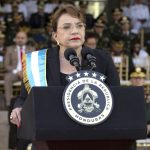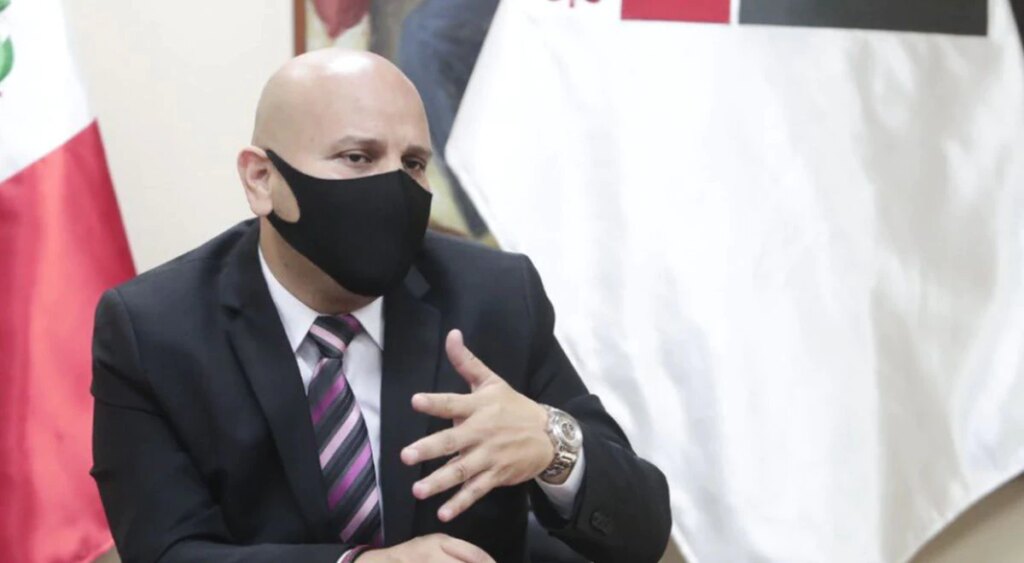The modernity of the system transport group points to Los Alcarrizos with the construction of the Line 2-C of the Santo Domingo Metrowhich according to the authorities, will benefit one million people who live in populous neighborhoods and residential areas of the municipality West Santo Domingo and part of the National District.
It is one of the top works of the government headed by the president Louis Abinaderwhich also includes the Cable Car The Alcarrizos and one bus station del Cibao, all converging in the so-called multimodal the kilometer 15 of the Duarte Highway.
The Metro, which is expected to be completed next year at a cost of more than 500 million dollars, and which would generate more than 2,500 direct jobs, is part of the original project for the system designed during the governments of former President Leonel Fernández, but redesigned by the current authorities.

These are two joint works, the Metro, which will have five elevated stations from the 800-meter tunnel that will connect the María Montez Station at kilometer 9 of the Duarte highway, to the Los Alcarrizos entrance.
At the same time, a marginal road will be built that will allow the vehicular circulation of the local part of the area, an added value that will allow to relieve that part of the Duarte Highway where hundreds of vehicles converge and form long traffic jams every day.
What is done
Rafael Antonio Santos Pérez, director of the Office for the Reorganization of the Transport (Opret) says that in less than two weeks they will be working on the internal excavations of the tunnel in the part of the Enriquillo neighborhood that is expected to be completed in a period of about six months, while the process of socialization and payment of another 60 homes continues. .
“There you are going to find some metal piles as if sealing the tunnel door, on those piles the first trusses are placed, which is what supports the tunnel and the piles are cut at the entrance of the tunnel, there we begin to dig… we have We have to prepare that mouth of the tunnel so that it is not going to collapse because the first few meters are the most difficult”, explains Santos Pérez.
He explained that in principle the work is slow due to the nature of the excavations, but that after the first 10 meters of the tunnel are made and the machine is covered inside, the land improves and eight and even 10 meters can be done daily until the tunnel is complete. the 800 contemplated by the underground project.
He argued that in terms of engineering it cannot be said that the tunnel work begins after the tunneling machine is underground because in this case more than a month has been spent working on the part of the installation of the camp and on the preparation of the ramp. .
Once the Metro exits the tunnel, it will join the protected elevated part of a “false tunnel” of about 150 to 200 meters and then continue at a height of about 6 meters to Los Alcarrizos, explained the director of Opret.
“When we reach the cut of the Guajimía ravine, the Metro leaves, but it already leaves six meters high and no one reaches it there… it will always be kept at least six meters high, from there to Los Alcarrizos,” he reported.
The seasons
The first station of Line 2-C will be at Autopista Duarte, corner of Los Beisbolistas Avenue, where a warehouse operates today. Users who live in the northern part of Duarte will be able to access the Metro by crossing the traffic light.
A second station will be a kilometer further on, at the intersection with Monumental Avenue, in the same way users who live in sectors opposite to the road where the Metro will circulate will be able to have access under the control of the traffic light, below the elevated one.
From the Beisbolistas to the Monumental there are approximately two kilometers, the greatest distance between two stations. Usually between one station and another the distance is 800 meters to one kilometer 200 meters.
“Here there is an entrance to Manoguayabo and the one to the Cemetery, in the Monumental, all those neighborhoods are going to have their little shell, from stations to stations, the distance could be one kilometer 200 meters, the one that is furthest, will be 600 meters, you have to divide the distance in two: either you go to one or the other closest station”, said Santos Pérez.
The third station will be extended from the Monumental to the Prolongation February 27. There are no traffic lights on this section, but people will be able to cross the road over the existing bridge and head to the station whose rails will be several meters above the extension.
The fourth station is Pantoja, it will be located near the entrance to La Ciénaga, at kilometer 14. Here, residents at the north end of the Duarte highway will be able to reach the Metro via the site’s elevated route, which will be extended to the marginal , according to the explanations of the director of the Opret.
“Pantoja in the north it is a very populated neighborhood that is going to have a connection, it has a pedestrian bridge, it is going to have a connection in front of kilometer 14”.
The fifth and last station will be in Los Alcarrizos, in the kilometer 15where is built multimodalResidents at the end of Duarte will be able to do so under the control of the local traffic light, but Opret also proposed to the Ministry of Public Works the construction of a small tunnel that connects with the Los Alcarrizos Beltway, which is currently under construction.
The director of the Office for the Reorganization of the Transport He trusted that the world economic situation will allow these works to be carried out, which will be of direct benefit to the population.
Fair expropriations, but with the Law in hand
The director of Opret said that the negotiations with the owners of the constructions that will be affected by the construction of the Metro and the marginal area are in progress, and recalled that many of the houses were built on State land.
He recognized that there will be businesses that will be affected, but that a way is being sought to socialize so that the need to build the two works is understood, which will also benefit their commercial establishments. “Logically we have not had any problems, we pay the damages to those I mentioned, we are paying them, we have paid 133, plus 30. Now we are processing 60 plus the payment,” said Rafael Antonio Santos Pérez, director of Opret . He insisted that a fair payment is being made to the owners, respecting their rights while recognizing the illegality of some constructions that fall within the framework of the right of way.
















